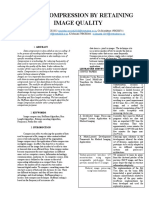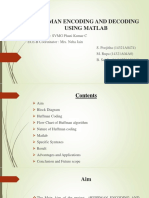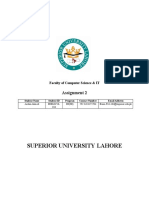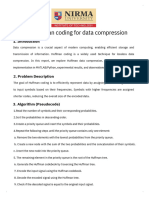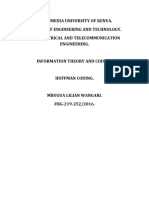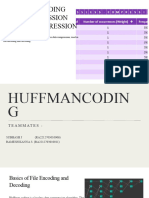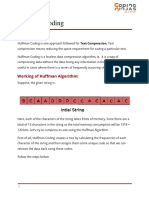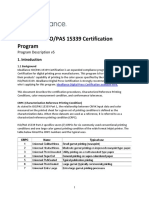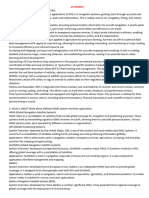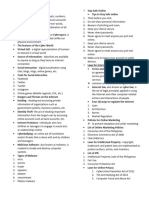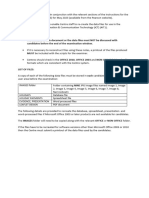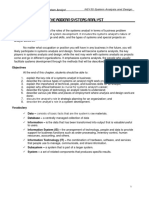0% found this document useful (0 votes)
109 views9 pagesDIP Lab 11 Huffman Encoding
Huffman encoding was used to compress a grayscale image. The encoding was done by assigning shorter bit codes to more frequent pixel values and longer codes to less frequent values. The encoded image was then decoded back to the original image format, verifying the decoding process. The compression ratio achieved by Huffman coding on the image was calculated to be 1.0868, showing the image was compressed by that ratio.
Uploaded by
mahadm.bscs21seecsCopyright
© © All Rights Reserved
We take content rights seriously. If you suspect this is your content, claim it here.
Available Formats
Download as DOCX, PDF, TXT or read online on Scribd
0% found this document useful (0 votes)
109 views9 pagesDIP Lab 11 Huffman Encoding
Huffman encoding was used to compress a grayscale image. The encoding was done by assigning shorter bit codes to more frequent pixel values and longer codes to less frequent values. The encoded image was then decoded back to the original image format, verifying the decoding process. The compression ratio achieved by Huffman coding on the image was calculated to be 1.0868, showing the image was compressed by that ratio.
Uploaded by
mahadm.bscs21seecsCopyright
© © All Rights Reserved
We take content rights seriously. If you suspect this is your content, claim it here.
Available Formats
Download as DOCX, PDF, TXT or read online on Scribd
/ 9





















